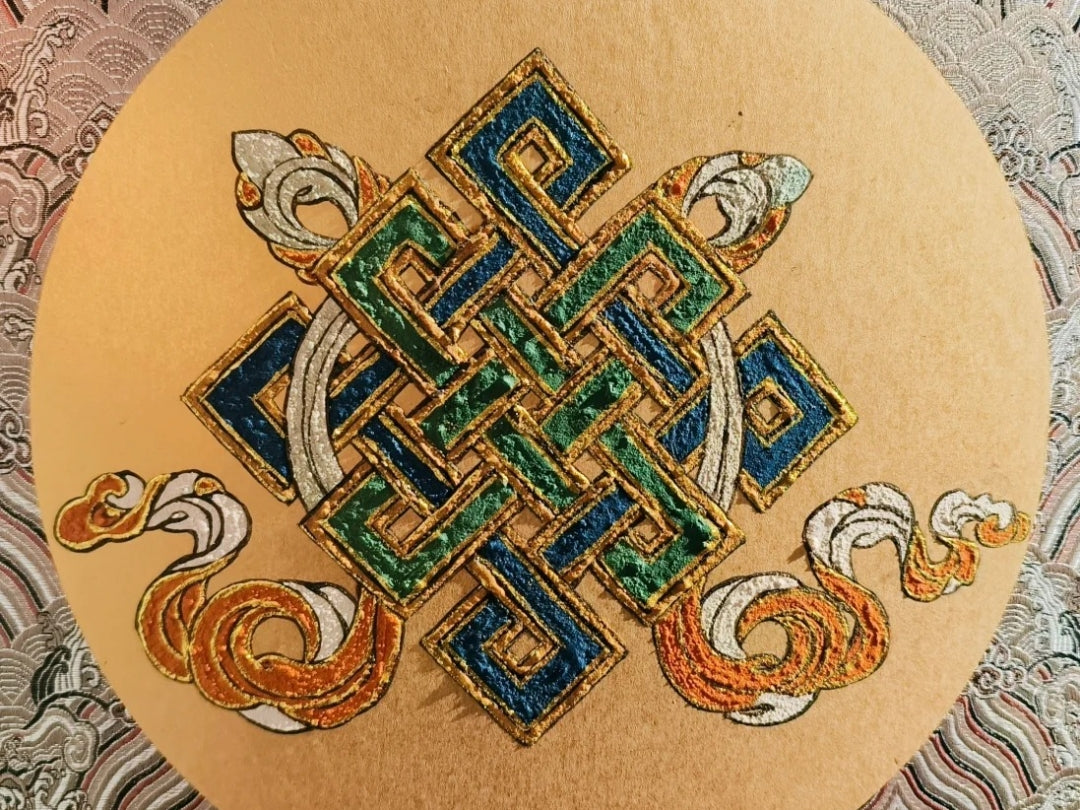The Gawu box is a transliteration from Tibetan, meaning "protective Buddha box." In Tibetan, it is referred to as "Gavu," which translates to "small box." It is typically crafted from metals such as gold, silver, or copper. Inside, it often contains small Buddha statues, protective charms, or Tibetan medicine. Whether in daily life or during pilgrimages, the Gawu box is an essential item people carry with them.

Cultural and Religious Significance of Gawu Boxes
The Gawu box is not only a significant item in Tibetan culture but also holds immense religious and cultural value. In Tibetan traditional culture, the making of the Gawu box is very meticulous. It is often blessed by high-ranking monks through prayers, endowing it with profound religious and cultural significance.
The Origin of Gawu Boxes: A Tale of Blessings
There are many ancient legends about the origins of the Gawu box. It is said that during times of frequent wars and widespread diseases on the Qinghai-Tibet Plateau, a wise monk sought to calm the people by collecting pure snow water from the sacred mountains, flowers symbolizing life, and incense from temples. He placed these items into small boxes, which, after being blessed, gained magical powers to protect the wearer, ensuring safety, happiness, and well-being. This legend not only bestows the Gawu box with extraordinary meaning but also elevates its importance in the hearts of the Tibetan people.
Types of Gawu Boxes: Shrine-Style and Decorative-Style
Based on its appearance, Gawu boxes are mainly divided into two categories: shrine-style and decorative-style.
-
Shrine-Style Gawu Boxes:
The shrine-style Gawu box is typically worn across the chest, symbolizing both protection from evil and reverence for the Buddha image. Its front often features a small window, through which one can see metallic Buddha statues, Thangka paintings, or clay figurines known as "Tsa Tsa." The back can be opened to store precious sacred objects such as gemstones, printed mantras, protective charms, or relics. Some shrine-style Gawu boxes also have central designs featuring Sanskrit script combined with auspicious patterns, symbolizing protection against disasters such as wars, diseases, famine, or natural calamities. These patterns also signify blessings for harmony, physical and mental health, and smooth endeavors.

-
Decorative-Style Gawu Boxes:
The decorative-style Gawu box comes in several shapes, including mandala-style, vajra-style, and geometric patterns.- Mandala-Style: The mandala-style Gawu box is composed of two overlapping squares, representing the "world of all Buddhas." These often feature an abundance of gemstones and intricate patterns.
- Vajra-Style: The vajra-style Gawu box draws inspiration from the vajra’s powerful and solemn appearance, lending it a unique charm and aesthetic.
- Geometric Patterns: Geometric Gawu boxes come in circular, square, and their derivative shapes, adorned with simple yet orderly designs. These enhance the surface of the Gawu box and give it an elegant and layered aesthetic.
QiLing Aura Tibetan Hand-Painted 3D Thangka Buddha Pendant Necklace
Materials and Styles of Gawu Boxes
The materials used to make Gawu boxes are diverse, including gold, silver, copper, iron, titanium, and more. The size of the Gawu box is also highly flexible. Traditionally, men often wore geometric-shaped Gawu boxes, which they slung diagonally across the left armpit and chest. Women preferred round or oval Gawu boxes, often suspended by necklaces or silk ribbons on their chest or slung diagonally under the right armpit. Over centuries of evolution, the appearance and wearing methods of Gawu boxes have become less rigid.

Proper Practices for Wearing a Gawu Box
Regardless of gender, certain precautions are observed when wearing a Gawu box. It should not directly touch the body but must be separated by at least one layer of clothing. It must be removed during bathing or visiting restrooms and placed in a clean, elevated spot. Additionally, touching someone else's Gawu box without permission is strictly forbidden.
The Gawu box represents a unique blend of art, religion, and tradition. Whether as a piece of Buddhist Jewelry or a sacred object, it holds deep meaning for those who cherish Tibetan culture. By understanding its history and significance, we gain a greater appreciation for this extraordinary artifact and its role in preserving Tibetan spiritual heritage.



